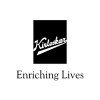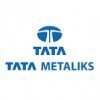Filter interviews by
Slr Metaliks Production Graduate Engineer Trainee Interview Questions and Answers
Slr Metaliks Production Graduate Engineer Trainee Interview Experiences
1 interview found
I applied via Naukri.com and was interviewed in May 2023. There were 2 interview rounds.

(2 Questions)
- Q1. Vernier calliper least count
- Ans.
Vernier caliper least count is the smallest measurement that can be read on the scale of a vernier caliper.
The least count of a vernier caliper is determined by the number of divisions on the main scale and the vernier scale.
It is calculated by dividing the smallest division on the main scale by the total number of divisions on the vernier scale.
For example, if the main scale has divisions of 1 mm and the vernier scale...
- Q2. Least count is .01mm
- Ans.
The least count of .01mm means that the smallest measurement that can be accurately read is .01mm.
Least count refers to the smallest measurement that can be accurately read on a measuring instrument.
In this case, with a least count of .01mm, the instrument can accurately measure to the nearest .01mm.
For example, if a measurement reads 5.23mm, the instrument can accurately measure up to 5.24mm but not beyond that.
Top trending discussions






Interview questions from similar companies

Production Graduate Engineer Trainee Interview Questions & Answers
Bmm Ispatposted on 23 Jun 2023
I applied via Campus Placement
Simple quantitative aptitude questions with technical questions
(3 Questions)
- Q1. Introduction Basic questions Project related explanation
- Q2. Explain about your project
- Q3. Which is your favorite subject

Production Graduate Engineer Trainee Interview Questions & Answers
SHYAM METALICS AND ENERGYposted on 21 Sep 2023
I applied via Campus Placement and was interviewed before Sep 2022. There were 3 interview rounds.

It's basic metallurgy and aptitude test
(2 Questions)
- Q1. What is pourbaix diagram?
- Ans.
A pourbaix diagram is a graphical representation of the thermodynamic stability of chemical species in different pH and potential conditions.
Shows regions of stability for different chemical species at varying pH and potential
Helps in predicting the corrosion behavior of metals in different environments
Used in electrochemistry to understand redox reactions
Example: Pourbaix diagram for iron shows regions of stability fo...
- Q2. Draw iron-carbon diagram?
- Ans.
Iron-carbon diagram shows the phases of iron and carbon at different temperatures.
Iron-carbon diagram is a graphical representation of the phases of iron and carbon at different temperatures.
It shows the different phases such as austenite, ferrite, cementite, and pearlite.
The diagram helps in understanding the microstructure of steel and its properties.
It is important in heat treatment processes to control the properti...
Interview Preparation Tips

I applied via Referral and was interviewed before Feb 2022. There were 3 interview rounds.

General questions from graduation subjects & questions from Quantitative aptitude. Overall paper difficulty was at medium level.
(6 Questions)
- Q1. Introduce yourself. Different types of measuring instruments & their applications, least count.
- Q2. Project details done in graduation last semester.
- Q3. Applications of measuring instruments.
- Ans.
Measuring instruments are used in various applications to accurately measure physical quantities.
Quality control in manufacturing processes
Monitoring and controlling environmental conditions
Testing and calibration of equipment
Research and development
Process optimization and efficiency improvement
Data collection and analysis
Safety and hazard detection
Medical diagnostics and patient monitoring
- Q4. Different types of castings & their uses.
- Ans.
Different types of castings & their uses
Sand casting: used for large and complex shapes like engine blocks
Investment casting: used for intricate and detailed parts like jewelry
Die casting: used for high-volume production of small to medium-sized parts like car components
Centrifugal casting: used for cylindrical shapes like pipes and tubes
Continuous casting: used for producing long and continuous shapes like steel bille
- Q5. Manufacturing processes & their applications.
- Ans.
Manufacturing processes are techniques used to transform raw materials into finished products.
Casting: pouring molten metal into a mold to create a solid object (e.g. automotive engine blocks)
Machining: removing material from a workpiece using cutting tools (e.g. CNC milling)
Forming: shaping materials through deformation (e.g. sheet metal bending)
Joining: combining multiple parts into a single entity (e.g. welding)
Addi...
- Q6. Difference between first and third angle projection in mechanical drawings.
- Ans.
First angle projection and third angle projection are two different methods used in mechanical drawings to represent a 3D object on a 2D plane.
First angle projection is commonly used in Europe and Asia, while third angle projection is commonly used in North America.
In first angle projection, the object is placed in the first quadrant and the views are projected onto the planes surrounding the object.
In third angle proj...
Interview Preparation Tips
- Manufacturing processes

I applied via Recruitment Consulltant
(1 Question)
- Q1. Purpose of having you
Interview Preparation Tips

Production Engineer Interview Questions & Answers
Kirloskar Ferrous Industriesposted on 27 Sep 2024
I applied via Campus Placement and was interviewed before Sep 2023. There were 2 interview rounds.
(2 Questions)
- Q1. Skills and comunication
- Q2. Time manegement
Route cause analysis
Interview Preparation Tips

Production Engineer Interview Questions & Answers
MSP Steel & Powerposted on 26 Jun 2024
(2 Questions)
- Q1. Kiln parameters
- Q2. Manage to technical issues
Interview Preparation Tips

Senior Production Engineer Interview Questions & Answers
SHYAM METALICS AND ENERGYposted on 18 Dec 2022
I applied via Referral and was interviewed in Jul 2022. There were 3 interview rounds.

(1 Question)
- Q1. RMHS including technically
(1 Question)
- Q1. Sallery discussion and ask my family beg ground
Interview Preparation Tips

Project Engineer Interview Questions & Answers
SHYAM METALICS AND ENERGYposted on 24 Jan 2025
I appeared for an interview before Jan 2024.
(5 Questions)
- Q1. What is the purpose of the "STOP" button in a Siemens PLC? What is the purpose of Organization Blocks (OBs) in a Siemens PLC? What does "fail-safe mode" mean in the context of a Siemens PLC? What is the ro...
- Ans.
The STOP button in a Siemens PLC is used to immediately halt the operation of the PLC.
The STOP button is a safety feature that allows operators to quickly stop the PLC in case of emergencies or malfunctions.
Pressing the STOP button will halt the execution of the program and prevent any further outputs from the PLC.
The STOP button is typically connected to a dedicated input on the PLC to ensure immediate response.
- Q2. How is a transformer's rated capacity expressed, and what is the reason for this expression?
- Ans.
Transformer's rated capacity is expressed in kVA and is based on the maximum amount of power it can handle.
Transformer's rated capacity is expressed in kilovolt-amperes (kVA).
The reason for expressing rated capacity in kVA is to account for both the voltage and current handling capabilities of the transformer.
kVA takes into consideration the power factor of the load, ensuring that the transformer can handle the maximum...
- Q3. What are the types of PLC?
- Ans.
Types of PLC include modular, compact, rack-mounted, and distributed control system.
Modular PLC: Consists of separate modules for CPU, I/O, and communication.
Compact PLC: All components are housed in a single unit, suitable for small-scale applications.
Rack-mounted PLC: Components are mounted on a rack, allowing for easy expansion and customization.
Distributed Control System (DCS): PLCs are spread out across a network,
- Q4. Do you know about redundancy in PLCs?
- Ans.
Redundancy in PLCs refers to having backup components or systems in place to ensure continuous operation in case of failure.
Redundancy in PLCs involves having duplicate components or systems that can take over in case of a failure in the primary system.
Examples of redundancy in PLCs include having backup power supplies, redundant CPUs, and duplicate I/O modules.
Redundancy can help prevent downtime and ensure continuous...
- Q5. How to maintain a safe loading dock
- Ans.
Maintaining a safe loading dock involves regular inspections, proper training for employees, clear communication, and implementing safety protocols.
Regularly inspect loading dock equipment for wear and tear
Provide proper training for employees on safe loading and unloading procedures
Ensure clear communication between truck drivers, warehouse staff, and management
Implement safety protocols such as using wheel chocks, do
Interview Preparation Tips

Production Manager Interview Questions & Answers
SHYAM METALICS AND ENERGYposted on 24 Dec 2021
Interview Questionnaire
3 Questions
- Q1. Grinding mill capacity?
- Ans.
The grinding mill capacity refers to the maximum amount of material that can be processed by the mill in a given time period.
Grinding mill capacity is typically measured in terms of tons per hour or pounds per hour.
It is important to consider the type of material being processed, as different materials may have different grinding requirements and capacities.
Factors that can affect grinding mill capacity include the siz...
- Q2. Grinding coal size
- Ans.
Grinding coal size refers to the particle size of coal after it has been ground down.
Grinding coal size is important for efficient combustion in power plants.
The size of coal particles affects the combustion rate and heat release.
Smaller coal particles burn more quickly and efficiently.
Coal size can be controlled through grinding equipment and sieving techniques.
Different coal sizes may be required for different applic...
- Q3. Chamical analysis of coal
- Ans.
Chemical analysis of coal involves determining its composition and properties.
Chemical analysis of coal helps in understanding its quality and suitability for various applications.
It involves determining the elemental composition, moisture content, volatile matter, ash content, and calorific value of coal.
Various techniques like proximate analysis, ultimate analysis, and calorimetry are used for coal analysis.
The resul...
Interview Preparation Tips
Slr Metaliks Interview FAQs
Tell us how to improve this page.
Slr Metaliks Interviews By Designations
- Slr Metaliks Engineer Interview Questions
- Slr Metaliks Mechanical Maintenance Engineer Interview Questions
- Slr Metaliks Technician Interview Questions
- Slr Metaliks Manager - HR & Administration Interview Questions
- Slr Metaliks Assistant Manager Interview Questions
- Slr Metaliks Senior Technician Interview Questions
- Slr Metaliks Supervisor Interview Questions
- Slr Metaliks Shift Incharge Interview Questions
- Show more
Interview Questions for Popular Designations
- Graduate Engineer Trainee (Get) Interview Questions
- Graduate Trainee Interview Questions
- Graduate Engineer Interview Questions
- Graduate Apprentice Trainee Interview Questions
- Graduate Apprenticeship Trainee Interview Questions
- Graduate Student Interview Questions
- Graduate Apprentice Interview Questions
- Post Graduate Engineer Trainee [pget] Interview Questions
- Show more
Slr Metaliks Production Graduate Engineer Trainee Interview Process
based on 1 interview
Interview experience
Interview Questions from Similar Companies
|
Engineer
92
salaries
| ₹1.8 L/yr - ₹5 L/yr |
|
Senior Engineer
80
salaries
| ₹2.7 L/yr - ₹7 L/yr |
|
Executive
34
salaries
| ₹4 L/yr - ₹8.4 L/yr |
|
Deputy Manager
32
salaries
| ₹5 L/yr - ₹12 L/yr |
|
Junior Engineer
29
salaries
| ₹2 L/yr - ₹5 L/yr |

SHYAM METALICS AND ENERGY

Jai Balaji Group

Electrotherm

Welspun Corp
- Home >
- Interviews >
- Slr Metaliks Interview Questions >
- Slr Metaliks Production Graduate Engineer Trainee Interview Questions










